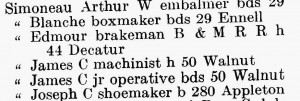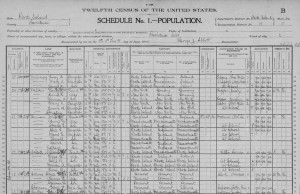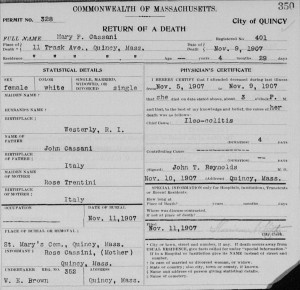Whether it is collecting, reading, drawing, or painting, maps have always been one of my greatest passions. Therefore, it should come as no surprise that I consider maps an essential tool in my genealogical research. As a researcher, even if I know that some of my ancestors spent their entire lives in the same city or town, I can never assume that they always lived in the same exact location. There are a multitude of sources where an individual's address at any given point can be found, including:
- City Directories
- Census Records
- Draft Cards
- Birth and Death Records
- Newspapers
City and Town Directories
When it comes to mapping locations within a city or town, directories can be among the most helpful resources. While city directories have been around since the eighteenth century, they started appearing in most cities and towns by the late nineteenth century. In essence, they can be considered a phone book before most people owned telephones. Typically, city directories were published on a yearly basis, and therefore allow genealogists to determine where within a city an individual lived during that year. Above is an example from the 1910 Lowell city directory.
In this example, the individual’s occupation is listed, followed either by ‘bds,’ which is short for ‘boards,’ or ‘h,’ which stood for ‘house.’ City directories are also helpful as they often list the date of death of an individual who died after the directory was published the previous year or indicate that a person removed to another town.
Most genealogical researchers are well aware of the importance of census records both at the national and the state level. While many use the records to show that an individual was in a certain town at a particular time, these records also often list the exact address of the family being surveyed, allowing us to know precisely where in a town the family was residing, the importance of which will be discussed in Part 2.
Draft Cards
Even if an individual did not serve in the military, if they were residing in the United States during one of the major wars of the twentieth century there is a good chance that they were required to fill out a draft card which can be used to find not only a person’s exact date of birth, but also his/her address as well as the address of their nearest relative.
In both Rhode Island and Massachusetts (among many other states) in the twentieth century, parents who filed a birth record were asked to give their current address at the time of the child’s birth, which allows modern researchers to determine where the parents were living. The same applied to death records, as the address of the deceased individual as well as an informant was required for the documentation. Many of these documents prior to World War II are readily available to researchers.
Newspapers
Newspaper articles, including marriage and death announcements, are also an easy way to determine where individuals were living at a given time, as they often gave the individuals name followed by ‘of [local address].’
Concluded here.
Share this:
About Zachary Garceau
Zachary J. Garceau is a former researcher at the New England Historic Genealogical Society. He joined the research staff after receiving a Master's degree in Historical Studies with a concentration in Public History from the University of Maryland-Baltimore County and a B.A. in history from the University of Rhode Island. He was a member of the Research Services team from 2014 to 2018, and now works as a technical writer. Zachary also works as a freelance writer, specializing in Rhode Island history, sports history, and French Canadian genealogy.View all posts by Zachary Garceau →


